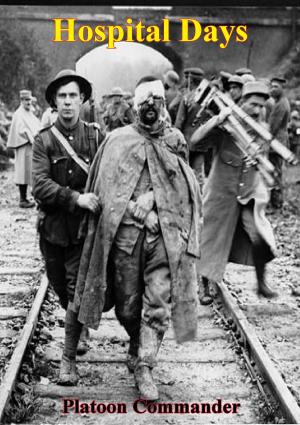Ardennes-1944: An Analysis Of The Operational Defense
Nonfiction, History, Germany, European General, Military, United States| Author: | Major Francis M. Cain III | ISBN: | 9781782895039 |
| Publisher: | Lucknow Books | Publication: | August 15, 2014 |
| Imprint: | Lucknow Books | Language: | English |
| Author: | Major Francis M. Cain III |
| ISBN: | 9781782895039 |
| Publisher: | Lucknow Books |
| Publication: | August 15, 2014 |
| Imprint: | Lucknow Books |
| Language: | English |
This study examines the nature of the defense at the operational level of war by analyzing the Battle of the Bulge in Dec. 1944 using the concepts of blitzkrieg and "web" defense. The monograph begins by discussing the influence of defensive theory on the operational concepts of blitzkrieg and "web" defense. The German concept of blitzkrieg incorporates Clausewitz’s theory of the offense by emphasizing surprise, speed, and concentration at the decisive point. The counter to the blitzkrieg offense is found in COL F.O. Miksche’s concept of "web" defense. The Battle of the Bulge provides an excellent example of a "web" defense pitted against a blitzkrieg offense. The German blitzkrieg in the Ardennes in 1944 failed for many reasons: 1) Army Group B did not concentrate its strength against the most vulnerable section of the Allied line; 2) The rugged Ardennes terrain could be easily defended against attacks by mechanized forces; 3) Key American commanders (Eisenhower, Gerow, and Middleton) quickly recognized the value of holding several key road junctions (St. Vith, Malmedy, Bastogne, Marche, and Rochefort) which dominated movement through the Ardennes; 4) The Allies held the shoulders of the German penetration; 5) The Allies quickly concentrated armored and motorized units to blunt the German penetration; and 6) Army Group B lacked operational reserves and adequate logistic support. The analysis of the Ardennes shows that the defense is indeed the stronger form of war and that a "web" defense can be employed effectively against a blitzkrieg offense...The Allies effectively used a "web" defense to counter these threats. If NATO is to defeat a Soviet attack without resorting to the use of nuclear weapons, it must adopt a viable operational defensive concept. "Web" defense is such a concept.
This study examines the nature of the defense at the operational level of war by analyzing the Battle of the Bulge in Dec. 1944 using the concepts of blitzkrieg and "web" defense. The monograph begins by discussing the influence of defensive theory on the operational concepts of blitzkrieg and "web" defense. The German concept of blitzkrieg incorporates Clausewitz’s theory of the offense by emphasizing surprise, speed, and concentration at the decisive point. The counter to the blitzkrieg offense is found in COL F.O. Miksche’s concept of "web" defense. The Battle of the Bulge provides an excellent example of a "web" defense pitted against a blitzkrieg offense. The German blitzkrieg in the Ardennes in 1944 failed for many reasons: 1) Army Group B did not concentrate its strength against the most vulnerable section of the Allied line; 2) The rugged Ardennes terrain could be easily defended against attacks by mechanized forces; 3) Key American commanders (Eisenhower, Gerow, and Middleton) quickly recognized the value of holding several key road junctions (St. Vith, Malmedy, Bastogne, Marche, and Rochefort) which dominated movement through the Ardennes; 4) The Allies held the shoulders of the German penetration; 5) The Allies quickly concentrated armored and motorized units to blunt the German penetration; and 6) Army Group B lacked operational reserves and adequate logistic support. The analysis of the Ardennes shows that the defense is indeed the stronger form of war and that a "web" defense can be employed effectively against a blitzkrieg offense...The Allies effectively used a "web" defense to counter these threats. If NATO is to defeat a Soviet attack without resorting to the use of nuclear weapons, it must adopt a viable operational defensive concept. "Web" defense is such a concept.


![Cover of the book Contemptible [Illustrated Edition] by Major Francis M. Cain III](https://www.kuoky.com/images/2015/november/300x300/9781786251114-fijE_300x.jpg)


![Cover of the book Tragedy At Honda [Illustrated Edition] by Major Francis M. Cain III](https://www.kuoky.com/images/2015/november/300x300/9781786255440-qRl4_300x.jpg)








![Cover of the book A Year Ago; Eye-Witness’s Narrative Of The War From March 20th To July 18th, 1915 [Illustrated Edition] by Major Francis M. Cain III](https://www.kuoky.com/images/2015/november/300x300/9781786255587-fHvt_300x.jpg)
